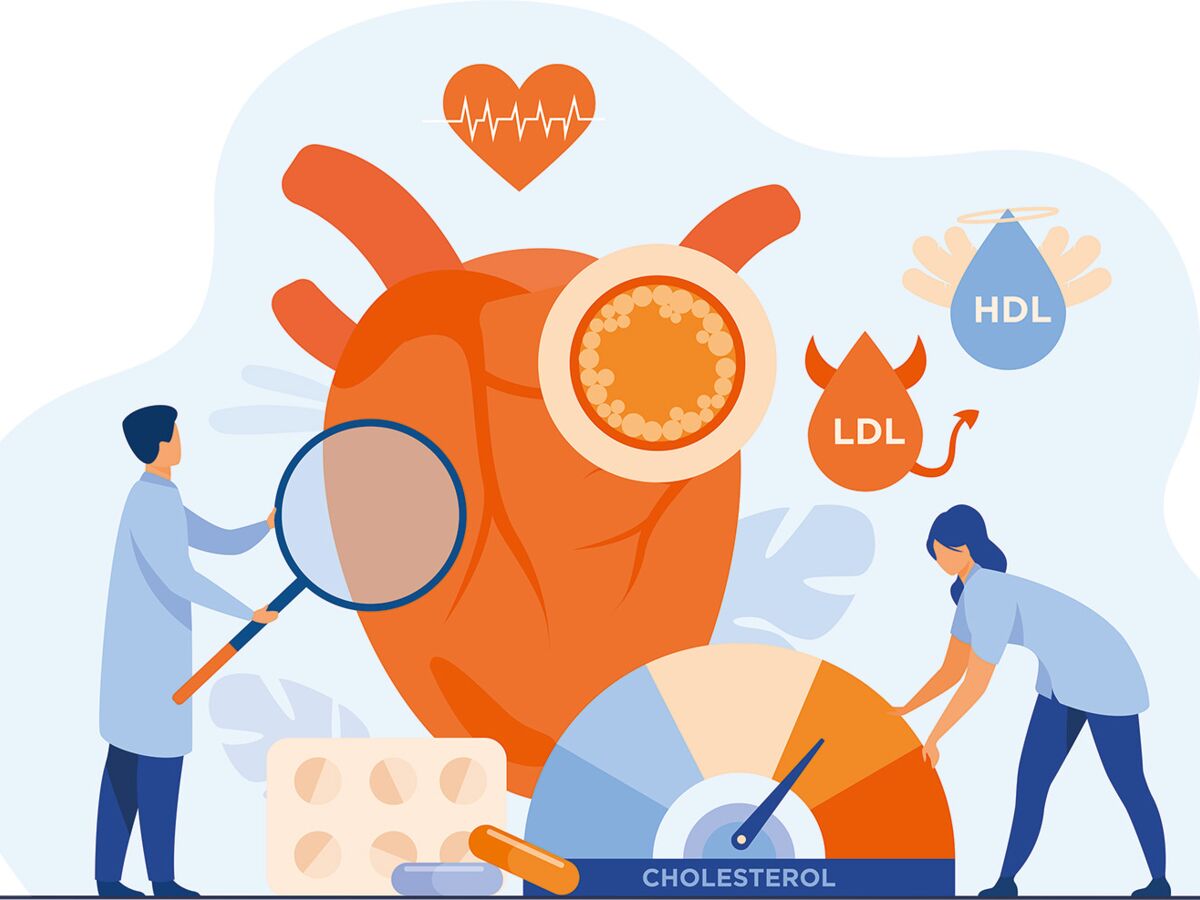In 2013, a controversy discredited statins, these drugs prescribed en masse (six million French people treated) to reduce cholesterol which attaches to the arteries and promotes the formation of atherosclerotic plaques, myocardial infarctions, angina and certain strokes. French doctors and researchers had questioned their effectiveness in reducing mortality and stressed side effects affecting quality of life. As a result, statins are today among the treatments most poorly observed by patients, with around 40% interruptions. This generalized distrust has given rise to new studies, including certain meta-analyses published in 2022. It emerges a real benefit of statins, but in a more targeted populationand a better understanding of side effects and therefore better support for patients.
Benefits redefined
Statins are no longer prescribed for the slightest excess cholesterol, as was too often the case before.
On a case-by-case basis for primary prevention
“In patients who have never had cardiovascular problemthere is no threshold limit for LDL cholesterol, beyond which statins would be recommendedspecifies Professor Gérard Helft (Parisian Pitié Salpêtrière hospital), president of the French Federation of Cardiology. For them, we are primarily interested in all the risk factors.” If the person is at low risk of heart attack, simple closer monitoring will be recommended. On the other hand, in the case of overweight, smoking, sedentary lifestyle, high blood pressure and/or associated diabetes, support will need to be adapted. “We first seek to correct these risk factors through lifestyle, stopping smoking through support, practicing sport and a Mediterranean-style diet. In the absence of results on the various parameters, taking statins may then be considered, especially if the person has a family history.adds Professor Helft.
Systematically after a cardiovascular accident
“The benefit of statins after an heartstroke or a stroke is now a consensus, even in the presence of a cholesterol level low, because the cardiovascular accident attests that the LDL has already fixed itself on the arteries”, assures Professor Helft. “The effect of LDL on risk actually begins at very low levels, specifies Professor Eric Bruckert, endocrinologist and leading expert at the French Society of Cardiology. Moreover, even among people with a so-called normal level, we observe a benefit when the rate drops. As proof, populations whose LDL is genetically abnormally low, the risk of cardiovascular disease is collapsed.”
Appropriate treatment
If drug reduction of cholesterol is a priority to prevent the risk of cardiovascular recurrence, it remains to overcome patient mistrust and the adverse effects of treatments.
A nocebo effect better taken into account
“More than other drugs, statins induce a powerful effect nocebo, that’s to say manifestations that are actually felt, but caused by negative beliefs, assures Professor Bruckert. It is therefore essential to better communicate about the treatment and its benefits to encourage patient support and limit perception bias“, recognizes Professor Bruckert. And if the psychological or physiological origin of the symptom remains difficult to determine, an adaptation is often considered.
A rare but real physiological intolerance
It is observed in 9% of people treated. It is mainly muscular disorders (more rarely hepatic), more common in high-dose patients, women, people with diabetes, hypothyroidism, obesity, or chronic liver diseases, taking associated treatments (anti-arrhythmics or calcium channel blockers), or practicing sport intensively. A possible alternative: mainly ezetimibe which prevents the absorption of dietary cholesterol, often better tolerated but half as effective. It is prescribed as first intention when a family member has already been placed on statins without having tolerated them, in the event of refusal of treatment, and sometimes in combination with satins when the LDL remains high. In the case of resistant cholesterol despite statins, combining excess LDL and triglycerides in particular, other medications are also offered after a first accident: monoclonal antibodies anti-PCSK9 injectables.
Well-identified reasons for interruption
“Stopping treatment is recommended during pregnancy (unless there is a particular risk), and in the event of significant intolerance.“, recognizes Professor Bruckert. According to him, the age of the person is not a criterion in secondary prevention and statins should be continued after age 70-75 to limit the risks of recurrence of cardiovascular accidents. Only a first prescription should be evaluated at this age, because the naturally reduced life expectancy makes the benefit (especially observable after two years) more questionable. “We decide based on the physiological age (general state of health) of the patient, often different from the chronological age.“, adds Professor Bruckert.
New alternative molecules expected
Among the new features, bempedoic acid, which is involved in cholesterol metabolism, is already available in some European countries. A high-dose form of Omega 3 (eicosapentaenoic acid or EPA) is being tested to reduce cholesterol and inflammation, as is a molecule against resistant cholesterol (MK-0616), which acts by oral route like injectable anti-PCSK9.
Read also :
⋙ Cancer: statins to slow down the disease?
⋙ Statins: prescription, side effects, contraindications… everything you need to know about these medications
⋙ Cholesterol: can we do without statins?
